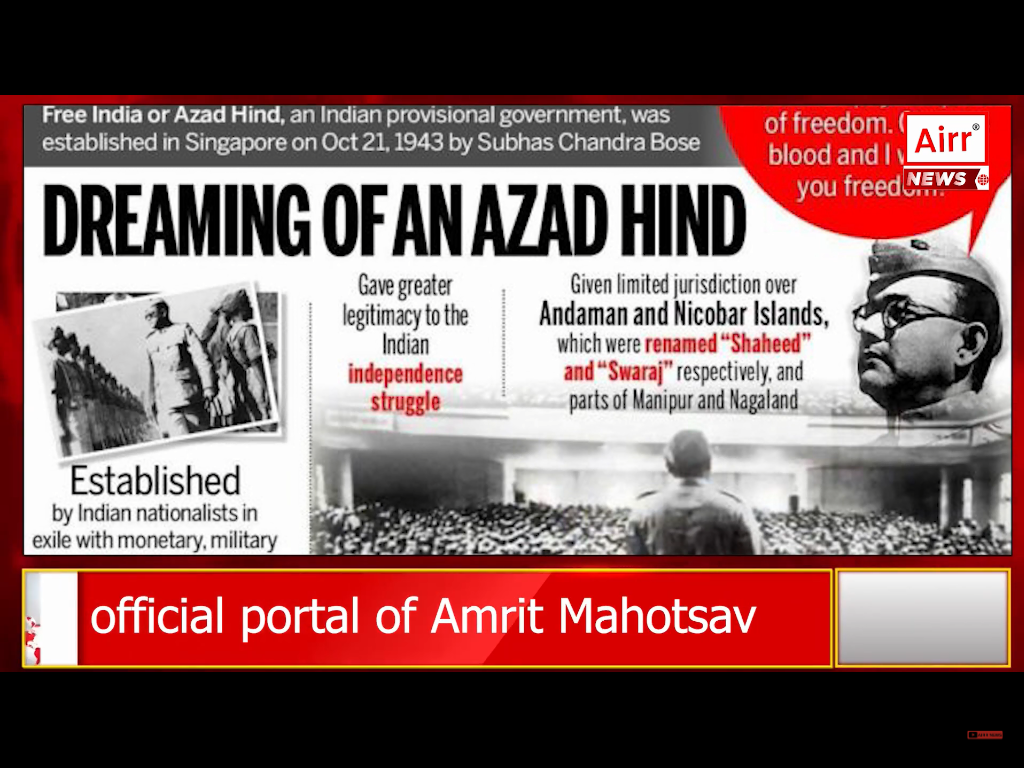In this four-part series, we explore the extraordinary journey of Netaji Subhas Chandra Bose and his INA. We will explore the women’s regiment of the Azad Hind Fauj and the forgotten victory of the INA in Nagaland.
In this episode, we will focus on the birth and composition of the Indian National Army under the leadership of Netaji Subhash Chandra Bose.
In 1942, Indian prisoners and nationalists got together to form a military organization that would force the British out of the country. Formed by Mohan Singh in South-East Asia, the Indian National Army (INA) was made of jawans whose dream was to liberate India. Despite its early success, the organization collapsed.
In 1943, Netaji reformed the army and named it Azru Hukumat e Azad Hind. The Azad Hind Fauzj was in direct contrast with Gandhiji’s peaceful resistance movement.
An article published on Study IQ mentions the following:
“After Subash Chandra Bose took over the Azad Hind Fauj, there was a surge in volunteers seeking to join the INA. This interim administration, which declared war on both the United Kingdom and the United States, was recognised by the Axis countries. In addition to raising money for the INA, recruits were educated. Additionally, the Rani Jhansi Regiment, a female unit, was established. Army recruits were instructed to march from Rangoon (Burma), where the INA HQ had moved in January 1944, while spouting the battle cry “Chalo Delhi!”
While INA’s subordination to the Japanese Army was not favored by many, Netaji saw it as a vital step towards achieving freedom.
The Study IQ article mentions:
“On November 6, 1943, the Japanese forces gave the INA control of the Andaman and Nicobar islands, which were renamed Shahid Dweep and Swaraj Dweep, respectively. On July 6, 1944, Subhas Bose hailed Mahatma Gandhi as ‘Father of the Nation’ from Azad Hind Radio (the first person to address Gandhi as “Father of the Nation”). Gandhi’s approval was requested for ‘India’s final war of independence,’ he said. The INA’s continued subordination to the Japanese Army was something Subash Chandra Bose accepted, but he saw it as a necessary step towards the ultimate objective of freeing India from the British Empire.”
In the next episode, we will focus on the composition of the INA and the all-powerful women’s regiment.
How did you find this information? Please mention this in the comments section. We would also like to know the kind of content you want to watch, and we will try to create it for you. For more news and updates, follow Airr News.
#Netaji #SubhashChandraBose #IndianFreedomStruggle #AzadHindFauz #WomenRegimentInINA #INA #NagalandVictoryINA #IndependenceDay #TheRepublicOfIndia #DelhiChalo #Nonviolence #Gandhiji #IndianNationalCongress #AirrNews #NewsInEnglish

